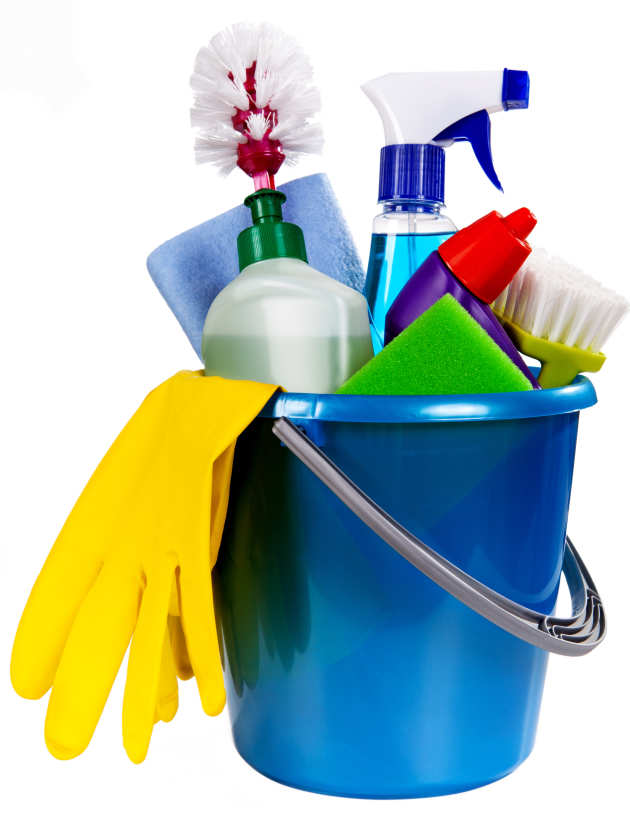Master Everyday Cleaning Techniques: How to Properly Scrub the Surfaces and Maintain a Clutter-Free Home
Wiki Article
Comprehending the Demand for Completely Sanitizing and Sanitizing Regularly Touched Surfaces in High-Traffic Areas
In the world of public wellness and safety and security, the thorough sanitation and sanitization of often touched surface areas in high-traffic locations stand as vital procedures in stopping the spread of dangerous virus. By discovering the numerous elements of surface disinfection, from the risks associated with neglecting cleansing methods to the efficient techniques that can be utilized, a clearer understanding arises of the essential function these practices play in securing public wellness.Relevance of Surface Disinfection
Highlighting the comprehensive sanitation of high-traffic surface areas is critical in keeping a hygienic atmosphere and stopping the spread of damaging pathogens. High-touch surface areas such as door deals with, light switches, lift buttons, and counter tops function as reproducing grounds for bacteria and infections. Routine sanitation of these surfaces is important to reduce the danger of contamination and transmission of ailments.By applying a robust sanitation protocol, organizations and establishments can produce a more secure setting for visitors, customers, and employees. Appropriate surface area disinfection not only alleviates the spread of transmittable diseases however additionally infuses confidence in the sanitation and security of the facilities. This aggressive approach demonstrates a commitment to wellness and wellness, which is especially vital in high-traffic locations where the probability of direct exposure to virus is heightened.
Furthermore, surface area sanitation plays an essential function in general infection control strategies. Integrated with hand health methods, using masks, and preserving physical distancing, complete sanitation of high-touch surface areas creates a thorough protection against the transmission of damaging bacteria. Prioritizing surface disinfection is a crucial part of an all natural strategy to health and wellness in shared spaces.
Risks of Neglecting Cleansing Practices
Neglecting extensive disinfection of high-traffic surfaces significantly enhances the danger of viral and microbial contamination, presenting a major risk to the health and wellness and security of individuals often visiting these areas. Failure to carry out appropriate cleaning techniques can bring about the build-up and spread of dangerous virus, including viruses and germs, on frequently touched surface areas such as doorknobs, hand rails, elevator switches, and counter tops.
In addition, overlooking the significance of comprehensive cleansing not just jeopardizes the well-being of people however also threatens efforts to maintain a sanitary and clean environment. It is crucial to acknowledge the relevance of proper sanitation protocols in protecting against the spread of infections and securing public health.
Efficient Disinfection Approaches
To preserve optimum sanitation and reduce the risk of contamination on high-traffic surface areas, employing effective disinfection techniques is necessary. One of the most usual and efficient sanitation approaches is making use of chemical disinfectants.One more efficient technique is making use of UV-C light. UV-C light has actually been revealed to be reliable in eliminating a vast array of microorganisms by disrupting their DNA structure, therefore avoiding them from duplicating. It is vital to utilize UV-C light effectively, making certain that the proper strength and exposure time are applied to accomplish the preferred disinfection outcomes.
In addition, using heavy steam cleansing as a sanitation method can be highly efficient, particularly on surfaces that are heat-resistant. Vapor can permeate porous surfaces and eliminate bacteria, infections, and other virus effectively. When making use of steam cleansing, it is necessary to ensure that the surface area reaches the called for temperature for an enough amount of time to assure appropriate sanitation.
Influence on Public Wellness
The maintenance of high requirements of cleanliness and sanitation on high-traffic surface areas plays an essential duty in protecting public wellness. Frequently touched surfaces in locations with high step, such as doorknobs, hand rails, elevator switches, and toilet facilities, offer as breeding premises for harmful microorganisms. Falling short to sufficiently decontaminate these surfaces can result in the quick spread of infectious diseases within neighborhoods. By carrying out thorough disinfection procedures, the threat of transmission of infections, germs, and various other bacteria can be substantially decreased.In high-traffic areas like airports, colleges, healthcare facilities, and public transportation systems, the impact of rigorous sanitation procedures can not be downplayed. Prioritizing the sanitization of regularly touched surfaces is a proactive technique to advertising public health and wellness and improving the safety of individuals in common areas.
Executing Regular Cleaning Protocols
Without delay instituting and sticking to a consistent timetable of cleansing protocols is extremely important for preserving the sanitation and security of high-traffic surface areas. Regular cleansing protocols are crucial in stopping the buildup of bacteria and microorganisms on regularly touched surfaces, particularly in locations with high foot traffic. By applying a methodical approach to cleaning, companies can effectively decrease the threat of illness transmission and develop a healthier atmosphere for staff members, customers, and the general public.To establish a reliable cleansing schedule, it is vital to identify check here high-traffic locations that require regular interest. These locations might include doorknobs, hand rails, lift buttons, washroom centers, and common equipment. Carrying out a regular cleansing regimen that targets these surfaces multiple times a day can substantially reduce the spread of damaging microorganisms Clear Out Any Clutter and infections.
In addition, utilizing suitable cleansing representatives and anti-bacterials is vital to ensuring that surfaces are completely sterilized. Normal training of cleansing team on correct cleansing strategies and the importance of adherence to the cleaning schedule is also vital in maintaining a hygienic environment. By prioritizing consistent cleaning methods, companies can advertise the health and wellness and wellness of people that communicate with these high-traffic surface areas.

Verdict
In conclusion, it is vital to focus on comprehensive disinfection and sanitization of often touched surface areas in high-traffic locations to stop the spread of harmful microorganisms and preserve public wellness. Neglecting proper cleaning practices can enhance the threat of contamination and transmission of conditions. By carrying out routine cleaning procedures and utilizing efficient sanitation techniques, we can produce a much safer atmosphere for everybody (Everyday cleaning). It is critical to identify the value of keeping tidy surface areas in high-traffic areas to guarantee the wellness of the area.In the realm of public health and safety, the meticulous sanitation and sanitization of frequently touched surface areas in high-traffic locations stand as critical actions check my site in protecting against the spread of unsafe microorganisms. By exploring the numerous facets of surface area disinfection, from the threats linked with overlooking cleansing procedures to the effective techniques that can be utilized, a more clear understanding emerges of the essential role these techniques play in protecting public health.In addition, utilizing vapor cleaning as a sanitation method can be very efficient, specifically on surface areas that are heat-resistant. When making use of steam cleansing, it is vital to make sure that the surface area reaches the needed temperature level for an adequate amount of time to assure proper disinfection.
In verdict, it is essential to focus on thorough sanitation and sanitization of regularly touched surfaces in high-traffic areas to protect against the spread of hazardous microorganisms and keep public health and wellness.
Report this wiki page